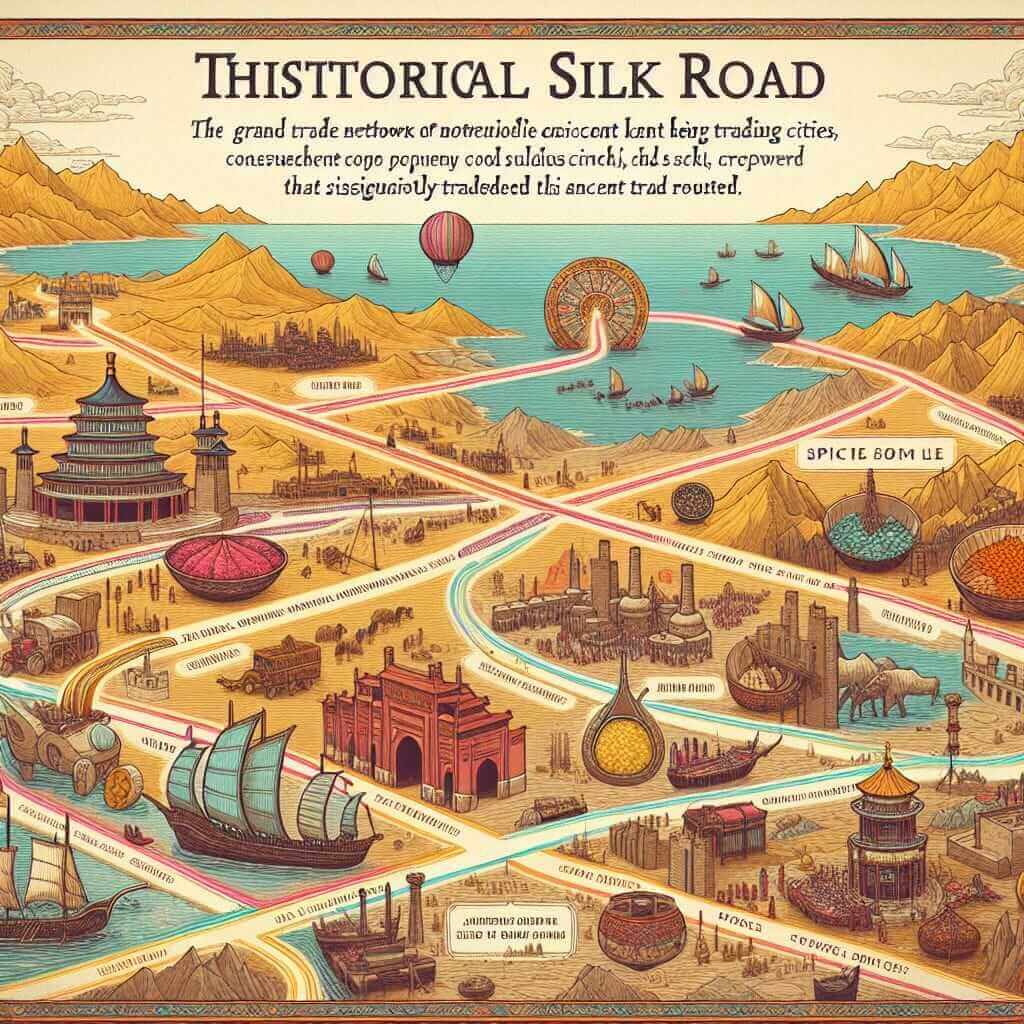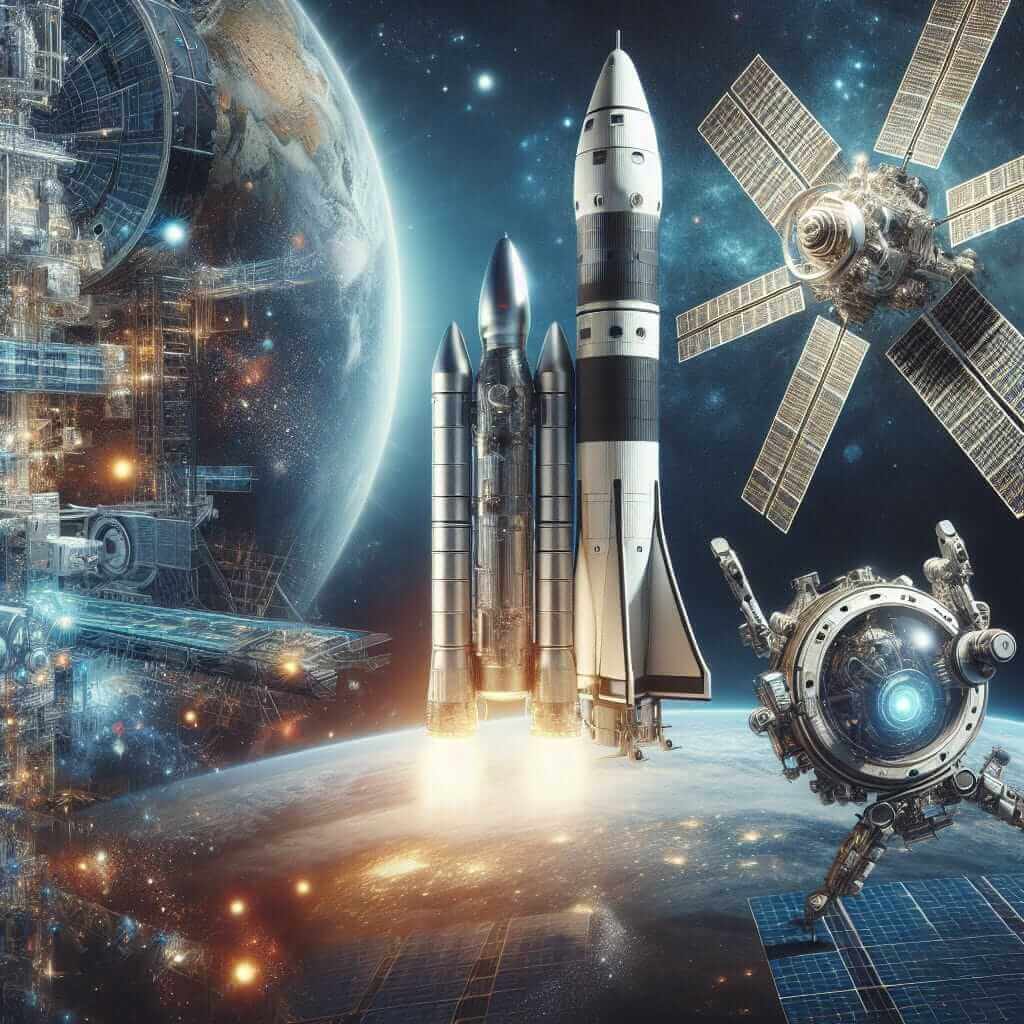When preparing for the IELTS Reading section, it’s vital to understand the type of content you might encounter. Topics related to history, such as the analysis of ancient trade routes, are common themes. These readings test your ability to identify details, understand complex concepts, and follow an argument. Given the importance and recurring nature of historical topics, understanding the intricacies of ancient trade routes can significantly aid your preparation.
Table Of Contents
- Reading Passage Practice: Historical Analysis of Ancient Trade Routes
- Passage
- Questions
- Multiple Choice
- True/False/Not Given
- Matching Information
- Answer Key and Explanations
- Multiple Choice Answers:
- True/False/Not Given Answers:
- Matching Information Answers:
- Common Errors in This Exercise
- Vocabulary Enhancements
- Grammar Focus
- Tips for High IELTS Reading Scores
This article will provide a comprehensive IELTS Reading practice test on the topic of “Historical Analysis of Ancient Trade Routes.” We’ll delve into various questions types you’ll likely face and offer detailed answer explanations to enhance your understanding.
Reading Passage Practice: Historical Analysis of Ancient Trade Routes
Passage
The analysis of ancient trade routes provides valuable insights into the economic, cultural, and social exchanges that shaped human history. These routes facilitated the movement of goods, ideas, and people across vast distances, leading to significant developments in various societies.
One of the most renowned ancient trade routes is the Silk Road, which connected China to the Mediterranean, passing through numerous civilizations, including the Persian Empire and the Indian subcontinent. The Silk Road was not a single path but a complex network of trade routes that promoted the exchange of silk, spices, and other valuable commodities.
Another critical trade route was the Amber Road, which linked the Baltic Sea to the Mediterranean. Amber, highly prized in ancient times, was traded for Roman wine, olive oil, and other luxury goods. This route illustrates how regional resources contributed to the broader exchange networks.
In Africa, the Trans-Saharan Trade Route was crucial for the exchange of gold, salt, and slaves. This route connected sub-Saharan Africa to North Africa and the Middle East, fostering cultural interactions and the spread of Islam.
Maritime routes, such as those used by the Phoenicians, also played a significant role in ancient trade. These seafaring traders from the eastern Mediterranean established colonies and traded extensively across the Mediterranean and beyond, contributing to the spread of alphabetic writing and other technologies.
Understanding these ancient trade routes helps historians and archaeologists piece together the economic and cultural dynamics of past civilizations. By examining the flow of goods and ideas, we gain a clearer picture of how interconnected the ancient world was.
 Silk Road
Silk Road
Questions
Multiple Choice
-
What was the significance of the Silk Road?
- A) It was a single route connecting China directly to Europe.
- B) It facilitated a complex network of trade and cultural exchanges across multiple civilizations.
- C) It connected the Baltic Sea to the Mediterranean.
- D) It was solely for the trade of silk.
-
Which commodities were commonly traded on the Amber Road?
- A) Gold and salt
- B) Silk and spices
- C) Amber and Roman goods
- D) Olive oil and wine
True/False/Not Given
- The Silk Road was primarily used for the trade of glass products.
- The Phoenicians were known for their overland trading routes.
- The Trans-Saharan Trade Route connected sub-Saharan Africa with North Africa and the Middle East.
Matching Information
Match the trade route with its description.
-
Silk Road
- A) Linked the Baltic Sea to the Mediterranean.
- B) Connected China to various civilizations including the Persian Empire.
- C) Used by Phoenician sea traders.
-
Amber Road
- A) Linked the Baltic Sea to the Mediterranean.
- B) Connected sub-Saharan Africa to North Africa.
- C) Fostered trade of gold, salt, and slaves.
-
Trans-Saharan Trade Route
- A) Used maritime routes extensively.
- B) Connected sub-Saharan Africa to North Africa and the Middle East.
- C) Focused on the trade of amber.
Answer Key and Explanations
Multiple Choice Answers:
- B – The Silk Road was a network of trade routes that connected multiple civilizations, promoting the exchange of goods, ideas, and cultures.
- C – Amber and Roman luxury goods were the primary commodities traded on the Amber Road.
True/False/Not Given Answers:
- False – The passage mentions silk, spices, etc., but not specifically glass products.
- False – The Phoenicians were known for their maritime trading routes, not overland.
- True – The Trans-Saharan Trade Route connected sub-Saharan Africa with North Africa and the Middle East.
Matching Information Answers:
- B – The Silk Road connected China to various civilizations including the Persian Empire.
- A – The Amber Road linked the Baltic Sea to the Mediterranean.
- B – The Trans-Saharan Trade Route connected sub-Saharan Africa to North Africa and the Middle East.
Common Errors in This Exercise
Students often make the following mistakes:
- Confusing different trade routes due to similar commodities (e.g., mixing details of the Silk Road and Amber Road).
- Misinterpreting routes as being primarily overland or maritime without carefully reading the text.
- Not paying attention to the specifics of each route’s significance, leading to incorrect answers in matching and True/False questions.
Vocabulary Enhancements
- Renowned (adj) /rɪˈnaʊnd/: Known and admired by many people; famous.
- Facilitated (v) /fəˈsɪlɪteɪtɪd/: Made an action or process easy or easier.
- Commodities (n) /kəˈmɒdɪtiz/: Raw materials or primary agricultural products that can be bought and sold.
- Cultural interactions (n phrase) /ˈkʌltʃərəl ˌɪntərˈækʃənz/: The way cultures influence and exchange traits with each other.
Grammar Focus
-
Complex Sentences: Combining multiple ideas into a single sentence using conjunctions.
Example: The Silk Road, which was not a single path but a complex network of trade routes, promoted the exchange of silk, spices, and other valuable commodities. -
Past Perfect Tense: Used to describe an action that was completed before another past action.
Example: By the time the Roman Empire flourished, the Amber Road had already been established as a major trade route.
Tips for High IELTS Reading Scores
- Practice Regularly: Consistency is key. Regularly practicing with various reading passages can help improve speed and comprehension.
- Understand Question Types: Familiarize yourself with the different question types and strategies to tackle each effectively.
- Expand Your Vocabulary: A broad vocabulary will help you quickly understand and interpret passages.
- Review and Reflect: After completing practice exercises, review your answers and understand your mistakes to avoid them in future exercises.
By diligently practicing and applying these strategies, achieving a high score in the IELTS Reading section becomes a realistic goal.


